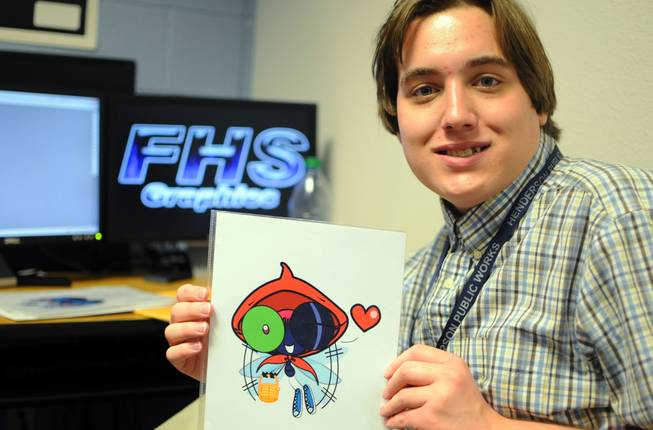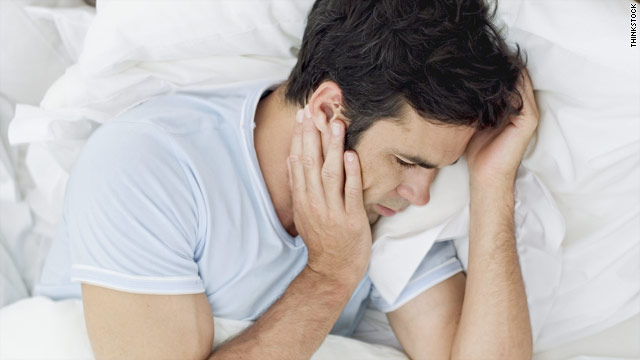Keeping sleep apnea sufferers' airways open
There are bulky machines and small devices, but there's no cure-all.
By Amanda Leigh Mascarelli, Special to the Los Angeles Times
February 28, 2011

As Americans' waistlines continue to grow, so does the number of people who aren't getting a good night's sleep.
About 2% of women and at least 4% of men suffer from obstructive sleep apnea, a condition in which the airway collapses and blocks breathing for 30 seconds or even up to a minute or two. The brain senses that it isn't receiving enough oxygen and sends a signal to the person to wake up. The awakenings are brief enough that people usually are not aware of them, but sleep is disrupted continually throughout the night, leading to daytime fatigue and drowsiness. (...)
Some people have mild enough symptoms that the condition can be alleviated with minor changes, such as sleeping on one's side rather than on the back.
But for those with more stubborn cases, the most common treatment is continuous positive airway pressure, or CPAP. There are many versions, though they all include a mask hooked up to a machine that blows air into the airway, acting like a virtual splint to help keep it open. Some masks cover the nose and mouth, while others cover the nose only or use tubes to blow air directly into the nostrils.
When used properly, CPAP is extremely effective. A study last month in the journal Sleep found that after three weeks of CPAP treatment, patients with severe symptoms saw marked improvements in daytime sleepiness and fatigue.
But not everyone wants to wear a mask to bed. "It's not very pretty, it's not very sexy and it can be uncomfortable at first," Ancoli-Israel says.
One new alternative is Provent, a much smaller device that emulates CPAP but uses the pressure created by a person's own breathing to maintain airflow. It consists of two circular stickers, each with a miniature valve in the middle. They cover the nostrils during the night — similar to a pair of Band-Aids — and are thrown away in the morning. A forthcoming study from the journal Sleep found that patients who used Provent consistently had significantly fewer apnea events and less daytime sleepiness.
Dental mouthpieces are another option for treating mild to moderate sleep apnea, especially for patients who are only modestly overweight. The devices are similar to retainers — they push the lower jaw forward, bringing the tongue forward as well and widening the airway as a result, Epstein says.
Read the rest of the article
here.
 Gemma Watkins, from Montreal Drive, was at home going about her daily chores when her son Taylor began convulsing on the floor. It was the first in a series of seizures, which confirmed the seven-year-old had generalised epilepsy.
Gemma Watkins, from Montreal Drive, was at home going about her daily chores when her son Taylor began convulsing on the floor. It was the first in a series of seizures, which confirmed the seven-year-old had generalised epilepsy.


 1. Many people are “short sleepers”
1. Many people are “short sleepers”



 Long term memory (LTM) systems need to be adaptive such that they enhance an organism's reproductive fitness and self-reproducing in order to maintain their complexity of communications over time in the face of entropic loss of information. Traditional 'representation-consolidation' accounts conceptualize memory adaptiveness as due to memories being 'representations' of the environment, and the longevity of memories as due to 'consolidation' processes. The assumption is that memory representations are formed while an animal is awake and interacting with the environment, and these memories are consolidated mainly while the animal is asleep. So the traditional view of memory is 'instructionist' and assumes that information is transferred from the environment into the brain.
Long term memory (LTM) systems need to be adaptive such that they enhance an organism's reproductive fitness and self-reproducing in order to maintain their complexity of communications over time in the face of entropic loss of information. Traditional 'representation-consolidation' accounts conceptualize memory adaptiveness as due to memories being 'representations' of the environment, and the longevity of memories as due to 'consolidation' processes. The assumption is that memory representations are formed while an animal is awake and interacting with the environment, and these memories are consolidated mainly while the animal is asleep. So the traditional view of memory is 'instructionist' and assumes that information is transferred from the environment into the brain. 







 Two organizations that recently combined advocacy efforts are Desert Arc in Palm Desert and United Cerebral Palsy of the Inland Empire in Cathedral City.
Two organizations that recently combined advocacy efforts are Desert Arc in Palm Desert and United Cerebral Palsy of the Inland Empire in Cathedral City.












 Can allergies to certain foods trigger migraines? What about food additives like MSG? Dr. David Dodick of the Mayo Clinic responds to readers’ questions about migraines.
Can allergies to certain foods trigger migraines? What about food additives like MSG? Dr. David Dodick of the Mayo Clinic responds to readers’ questions about migraines.












